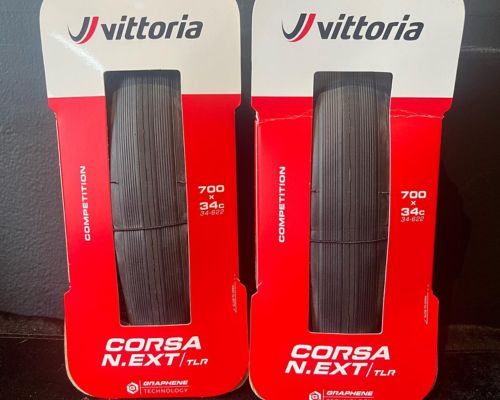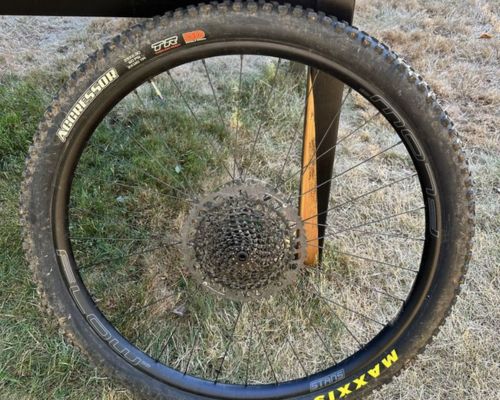How Long should Mountain Bike Tires Hold Air?
Maintaining the correct air pressure in tires is important to make your MTB riding fun and smooth. Many bikers wonder how long MTB tires should hold air or how often they should inflate them. So here’s a simple answer –
Mountain Bike Tires hold the air for approximately a week or 10 ten days due to large air volumes. You should always check the air pressure in tires before going on trails or long rides.
However, various factors can lead to air loss in bicycle tires, including punctures, air gradually seeping through the rubber, improper inflation, and debris causing leaks.
So, to ensure a smoother and safer ride, it’s essential to understand these factors and take steps to prevent flat tires. Different types of tires also have varying rates of air loss, so it’s worth knowing how your specific tires behave.
We will discuss these factors in this guide and clear up any confusion. To learn more about retaining air in mountain bike tires and whether mountain bike tires should be inflated before every ride, continue reading.
How much Air Loss is considered to be Normal for MTB?
When it comes to MTB (Mountain Bike) tires, understanding what’s normal for air loss is essential for a smooth and safe ride. MTB tires usually run at lower pressures than road bike tires, around 30-40 psi (2-2.7 bar). This lower pressure means they lose air more slowly than road bike tires.
On average, MTB tires lose about 5-10 psi of air weekly. This gradual loss is normal and nothing to worry about.
If you have tubeless MTB tires, they might lose air faster than tires with inner tubes, possibly due to sealant maintenance.
Different things like tire size, tire pressure, and the type of tires you use (clincher or tubeless) can affect how quickly air escapes from your MTB tires.
MTB riders are lucky because they don’t need to inflate their tires as often as road cyclists. Depending on how much you ride, you might only need to add air every 1-2 weeks to keep the right pressure and avoid over inflation.
You can add air as often as needed. Riding surfaces and conditions don’t seem to make a big difference in how fast air escapes from your tires. So, just keep your MTB tires at the recommended pressure for a smoother and safer off-road biking experience.
Should Mountain Bike Tires Be Inflated Before Every Ride?
Mountain bike tires should not necessarily be inflated before every ride. Still, regular tire maintenance is essential for optimal performance and safety after every ride.
How Often to Check Tire Pressure:
- Frequency: Depending on your riding habits, checking your tire pressure once a week or before every ride is a good practice. Riders who use their mountain bikes infrequently might find less frequent checks acceptable.
- Terrain and Conditions: If tackling rough or technical trails, consider checking your tire pressure more often, as the terrain can impact tire performance.
Recommended Pressure:
- Manufacturer’s Guidelines: Refer to your bike’s manufacturer guidelines for recommended tire pressure. This information is often found on the sidewall of the tire. Read our detailed guide to MTB tire pressure.
- Adjust to Riding Style: You can fine-tune the pressure based on your riding style and preferences. Lower pressure provides better grip on loose terrain, while higher pressure reduces rolling resistance on smoother trails.
Checking and Inflating:
- Use a Gauge: Invest in a quality tire pressure gauge to ensure accuracy when checking and inflating tires.
- Proper Inflation: Inflate the tires to the recommended pressure using a floor or portable bike pump. Ensure the valves are tightly closed after inflation.
- Visual Inspection: Inspect the tires for visible damage, debris, or thorns that could cause punctures. Remove any foreign objects.
What causes MTB Tires to hold Pressure sometimes and go Flat other Times?
There is a reason why tires last a while and then suddenly go flat. Let’s take a closer look.
Tube Trouble: The inner tube material is the main reason for fluctuating MTB tire pressure. Most mountain bike tires have butyl rubber inner tubes, which deteriorate over time, causing minor leaks. This explains why tires can’t hold pressure and then go flat after inflating them.
Valve Issues: The valve on your MTB tube can also lead to inconsistent pressure. Dust and debris can accumulate, causing slow air leaks. Sometimes, pumping up the tires disturbs the valve, leading to a quick pressure drop. Regular maintenance, like cleaning the valve and applying some lubrication, helps.
Environmental Factors: Tires are exposed to elements like ozone, UV rays, and heat, which accelerate rubber aging, making them less elastic and more prone to punctures. If your bike has been stored for a long time, these factors might have affected the tires.
Choosing the Right Tires: Selecting right MTB tires that match your riding conditions is crucial. If you primarily ride on roads, consider road-specific tires. They are less likely to develop problems seen in off-road tires, like knobs and thicker rubber.
Regular Check-ups: Inspect your tires and tubes regularly to minimize inconsistent tire pressure. Look for wear, embedded objects, or damage. Replace aging or damaged parts, including tubes and rim tape, promptly. Also, check your brake pads since hardened pads can reduce braking effectiveness.
How to Retain Air in Mountain Bike Tires for a Long Time?
To ensure your mountain bike tires retain air for an extended period, it’s essential to establish a routine. Start by regularly checking tire pressure with a reliable gauge and stick to the manufacturer’s recommended pressure range, adjusting it based on weight, riding style, and terrain.
Investing in high-quality tubes and tires can minimize the risk of leaks or punctures, and consider going tubeless for added protection against pinch flats and minor punctures. Frequent inspections for damage, such as cuts or tears, are crucial, as is the removal of any objects like thorns.
Ensure your rim tape is in good condition, and if you’re using tubeless tires, maintain sealant to plug small punctures. Regularly tighten valve cores, ensure the valve stems are undamaged, and use valve caps for added protection. Avoid overinflating your tires, and store your bike properly in a cool, dry place to prevent temperature-induced pressure fluctuations. Lastly, keep pedaling friend!
Can I Pump my MTB to 50 PSI?
If you’re a daily commuter using an E-mountain bike and hoping to pick up some extra speed, adjusting your tire pressure could help. Many cyclists believe that higher tire pressures like 50 psi result in a faster ride on the road. However, before you rush to inflate your tires to the maximum pressure listed on the sidewall, let’s address your concerns.
It’s essential to remember that when it comes to tire pressure, the key factor to consider is your tire, not your inner tube. While inner tubes hold the air, it’s the tire itself that supports the pressure and load. Therefore, the maximum pressure recommendation is primarily set by the tire manufacturer. If your tire sidewall indicates a maximum pressure of 55 psi, you should aim for that. Most inner tubes are designed to handle the pressure range recommended by the tire.
Now, let’s discuss the balance between speed and comfort. Higher tire pressures can lead to increased speed, especially on smooth roads. However, finding the right equilibrium between speed and ride comfort is crucial. Extremely high pressures can result in a harsher ride, reduced traction, and an overall less enjoyable biking experience, particularly when dealing with rough or uneven terrain during your daily commute.
Considering your commuting scenario, where smooth pavement likely dominates, you can experiment with slightly higher tire pressures closer to the recommended maximum. This adjustment should give you a noticeable speed boost. But remember, avoid exceeding the tire’s maximum pressure, as over-inflation can lead to discomfort and affect your control over the bike.
Final Thoughts
Understanding mountain bike tire maintenance is crucial. Worry not; as we mentioned, normal air loss is 5-10 psi per week. Check pressure weekly or before each ride, especially on challenging terrain.






